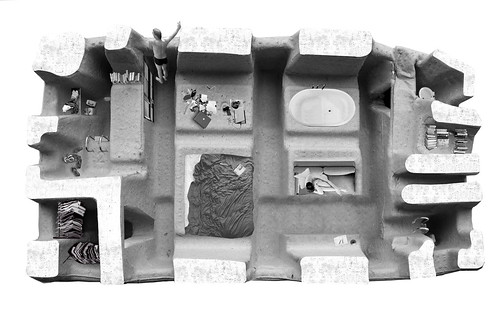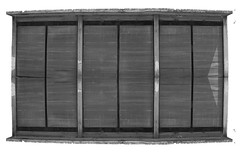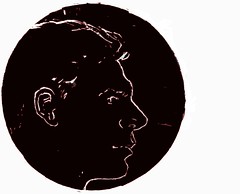the floating room

The floating room is an empty catamaran formed as a single habitable space.
The floating room is proposed as another way of working within the condition of image archives. It shows a systematic attitude to interpret disjunction. There are 3 elements in this archaeology of the boat that are not immediately obvious. The first element is a precise warehouse door photographed in Crete in 2005.


This door, treated in a symmetrical way in order to represent a simple paradoxical facade, was presented already in 2004 Biennale di Venezia as the no foundation building.The second is the paper “emballage” interior of a NOKIA cell phone, model of 2006. It was photographed and elaborated with distortions and virtual deformations of its images. The third element is a typical catamaran boat photographed in the port of Volos in May 2008.
We can generalize and think about nowadays condition in relation to this work of assembling. This architectonic move of combining 3 separate elements, found in an image archive, gives us an idea about what thinking will possibly be in the next era. Differently than intellectual investigations of the past, we may rather find their future dynamics closer to abstract irrational assembling force. Assembling images may form the paradigmatic field of this future intellectual inquiry. Thinking would rather be a structural transformation of images. An aesthetic treatment of this image potential is performed in the Floating Room project. Carrying in its single form a door, a box and a boat, it structures an unformed narration with neither needing any driving linear argumentation, nor proposing the rational subordination to any concrete, particular logic. This move of assimilation forms the mythological origin of an object without explaining why we could need this result as an objective presence. This may show a future of rationality. A projected form is proposed to be accepted or not. Architecture could possibly replace a part of thinking. Aesthetic priorities are meant to substitute a function of logic. Walter Benjamin would maybe call understand this as a big loss. Vilem Flusser wrote already, many years ago, about this possible future gap. The question about the specific intellectuality of aesthetics remains intriguing. After an assemblage as this one is done, we may accept it or not, build it or leave it, adopt it or refuse it. Adoption or refusal may show the limits of any thought proposed today. An assemblage is not proposed to be controlled within the context of any traditional, rational elaboration. It can be accepted or refused without consideration. In the archive era this may be a possible framework for the future of thinking. If in the past we were working for intellectual hybridity and for multiplicity, within the conditions of nowadays we will have to step back and think within the conditions of an imposed multiplicity what do we have to construct.





No comments:
Post a Comment